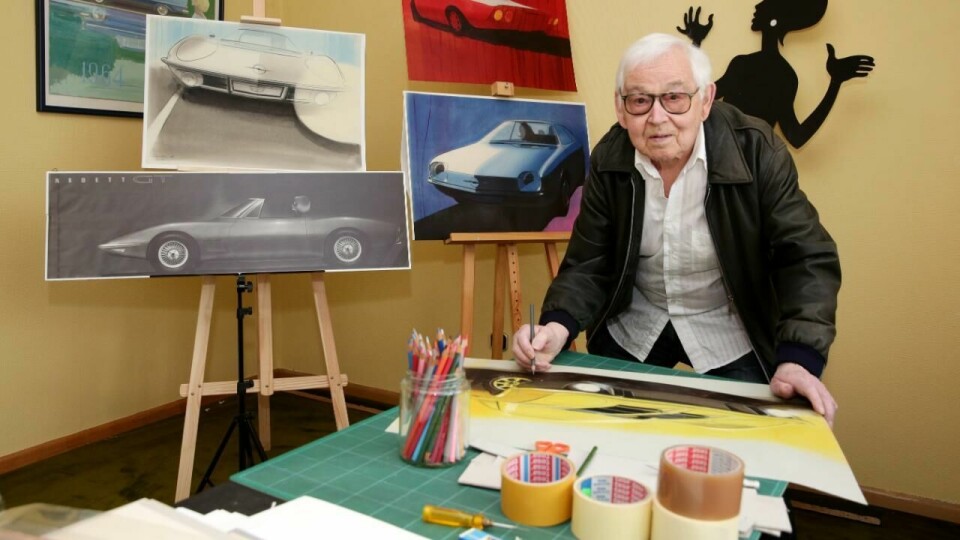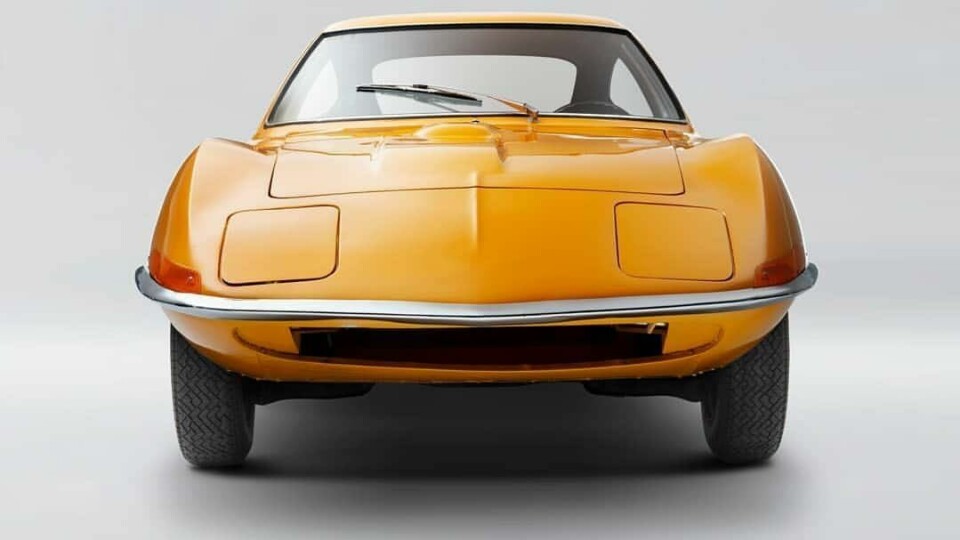
Concept Car of the Month: Opel Experimental GT (1965)
Opel’s small, curvaceous concept dazzled the crowds at Frankfurt in 1965 and paved the way for the production GT
The designers of the car that sat under a drape were shaking with nervous energy. The top management of Opel, along with invited guests, were on hand for the unveiling of a secret project.
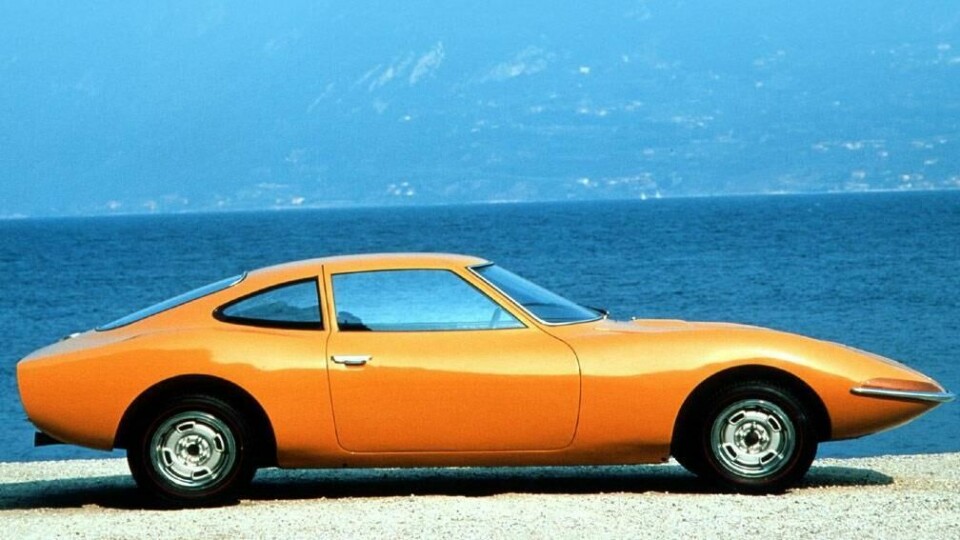
Finally, the moment came. The drape was removed as Opel design staff presented the project – a small, curvaceous sports car. The room was silent as the features and the design of the car, named the Opel Experimental GT, were introduced. It was a concept completely different from anything ever attempted at Opel. When the presentation was complete, those assembled broke into spontaneous applause, and the design team breathed a sigh of relief.
A young marketing executive, Robert (Bob) Lutz suggested the car be shown at the upcoming 1965 Frankfurt IAA. When it was unveiled there, it was embraced by management, the press, the public and even the Americans sent over from the GM Mothership to observe the proceedings.
It would be an auspicious beginning to the story of a small car that would be a turning point for Opel design, and the marque itself.
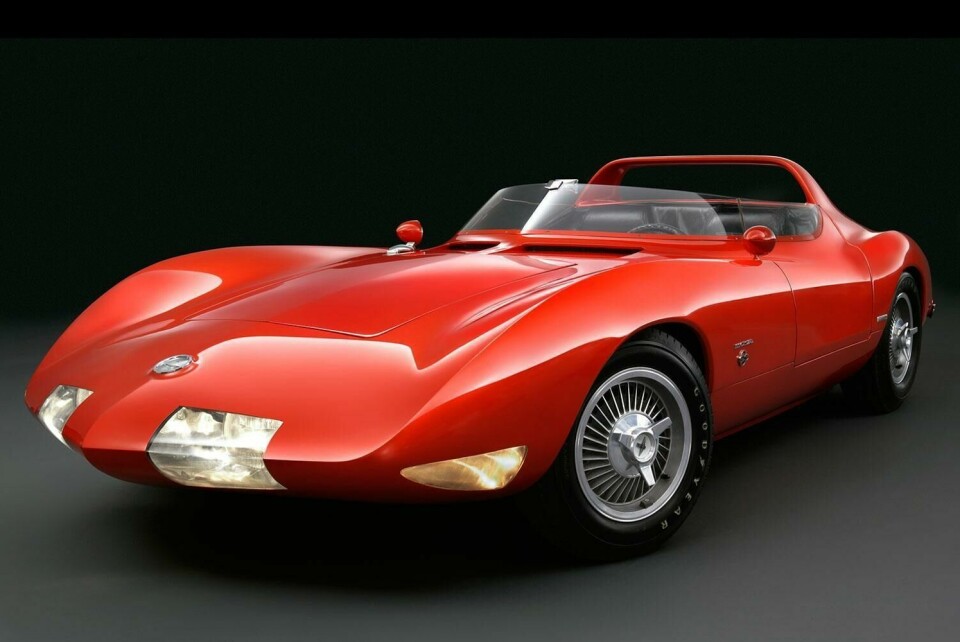
The story of the Experimental GT begins not at Opel, but at Chevrolet in the early 1960s. The Corvette and Corvair dominated the design conversation in those days. The Corvair, Chevrolet’s revolutionary compact was rapidly becoming a platform for all sorts of automotive experiments. After a couple of warm-up exercises modifying a standard Corvair, Bill Mitchell assigned the young designers Tony Lapine and Larry Shinoda to come up with a true sports car based on the Corvair. The result was the XP-777, eventually known as the Corvair Monza and Monza Spyder.
Corvair Monza GT and SS gallery
Introduced at the 1962 Elkhart Lake Sports Car Club of America race, the Monzas were a smash hit with press and the public. But it was made clear that they were concepts only. But their design would have a strong ripple effect through the General Motors design ecosystem. Over at Pontiac, covetous eyes were cast upon the Monza, and a secret programme (even Bill Mitchell did not know about it) was launched by John Z. DeLorean to develop a sports car that could be a halo car for the division.
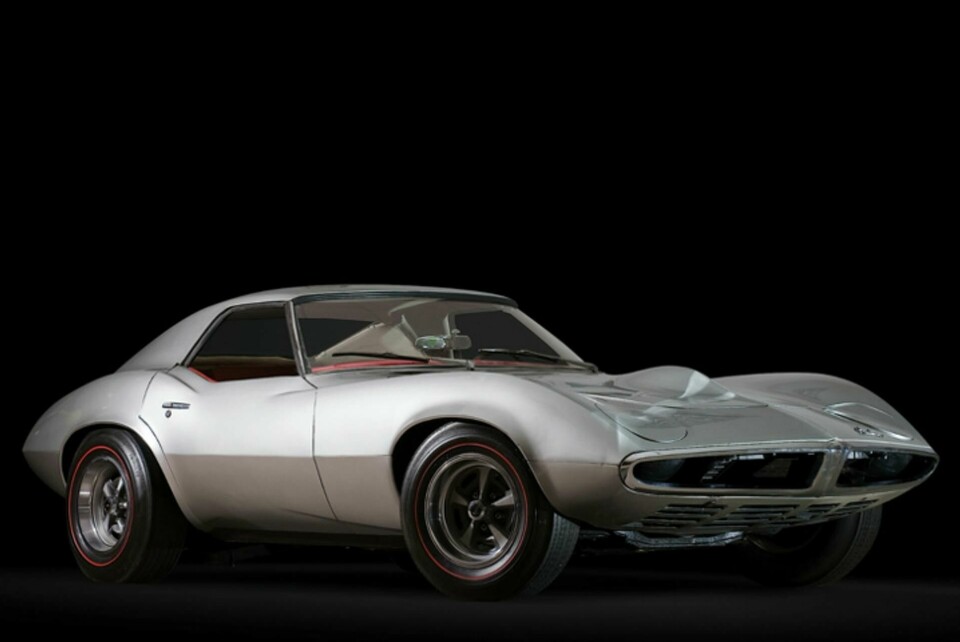
The result was the XP833 concept, the Pontiac Banshee, a two-seat sports coupé that, at first glance, seems like a face-lifted, badge-engineered Corvair Monza. In fact, the Banshee had a different brief. It was meant to be an everyman’s Corvette, with a shorter wheelbase, a small engine (a straight six) and basic interior (with a long list of options planned). Its competition was to be British sports cars such as the Triumph TR4, the MGB, and the Austin Healey. DeLorean would champion the project, claiming it would also be a ‘Mustang killer’.
In the end, however, it was the Banshee that perished. GM’s executive committee vetoed the project citing potential conflicts with Corvette sales, a view strongly advocated by Bill Mitchel himself. Then the committee quietly tasked Mitchell to take the design of the Banshee and develop a Chevrolet version, essentially creating the basic design of the Mako Shark II concept and, later, the C3 Corvette.
Gallery of the XP833 – Pontiac Banshee
Meanwhile, the Design Director of the Chevrolet division, Clare (Mac) MacKichan was sent over to Opel on a five-year assignment to direct the design programme there. From 1951 to 1962 MacKichan had steered the Chevrolet division’s design team through the introduction and rocky first years of the Corvette, the introduction of the classic 1955 and 1957 Chevrolet Bel Air, the introduction and retirement of tailfins, and much more. He was a steady, seasoned hand with good sense of style who worked well with the outsized egos of both Harley Earl and Bill Mitchell, and with GM top management and board members.
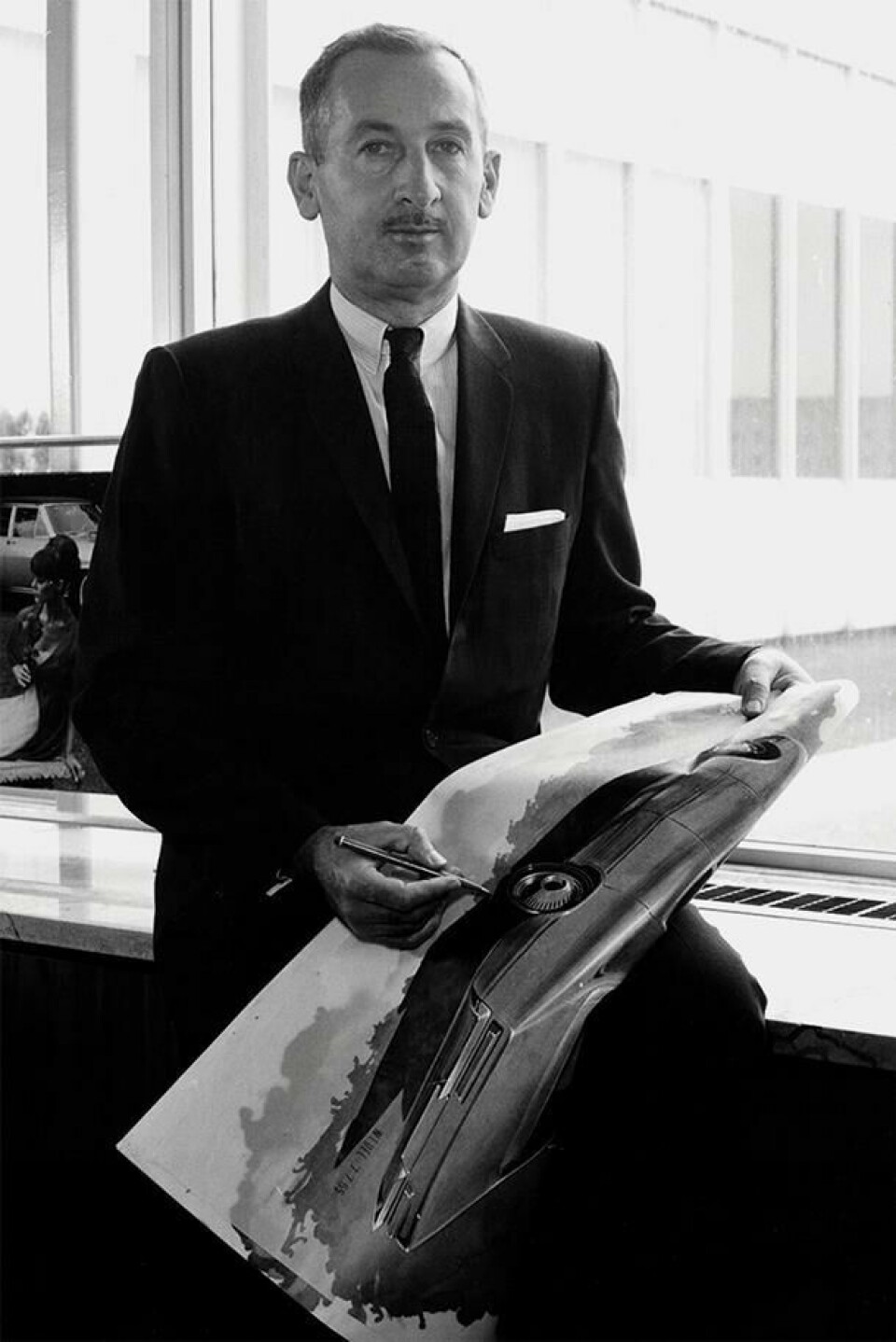
MacKichan was sent to Opel to guide the transition of the division from a reliable purveyor of dowdy, sensible cars, to a more exciting line that would capture the design trends emerging in the 1960s. Design talent itself wasn’t the challenge at Opel. A young designer named Erhard Schnell was in charge of the advanced studio and was busy with his small team redesigning the Rekord and Kadett for a new generation.
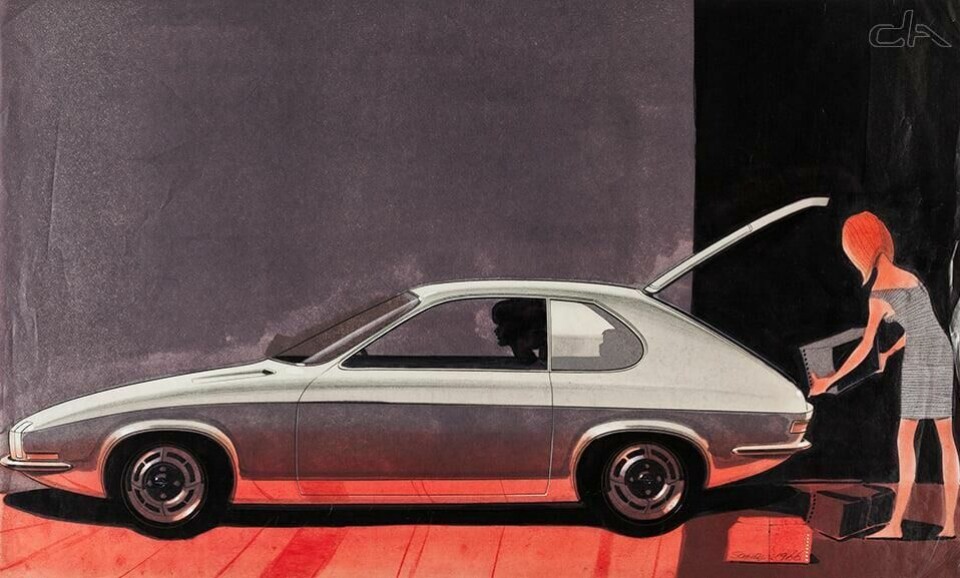
But GM intended to invest a lot into Opel design, and MacKichan was the Design Director the Bill Mitchell felt was the best for the task. “Mac” would greatly improve and expand the design facilities and processes of Opel’s small design team, and was influential enough to procure the funds necessary to bring Opel design into a leadership position in the German and greater European markets.
When MacKichan arrived in Germany in 1962, he surprised the team with a challenge directly from Bill Mitchell himself: A project for a small “everyman” sports coupé, one that had almost the exact same brief as the Banshee.
The team was up to their necks in Kadett and Rekord design studies at the time. These assignments were top priority, so remarkably, the Experimental GT as the project became known, was only worked on every couple of weeks- and of course, in secret. But when the designers focused on the project, it was all hands-on deck and remarkable progress was made.
Experimental GT design sketches
After approval by Opel management, the car was quickly prepared for the 1965 Frankfurt IAA. It was enormously popular with the public and press, and even won the grudging admiration of the competition. Opel’s management was then told to prepare the car for production- a shock for the conservative managers at the time, who assumed the Experimental GT would be just a halo car to draw people to the Opel stand.
And so work began to transform the Experimental GT to production GT. The Kadett chassis, upon which sat the curvaceous body, was intended by the engineers to be unchanged from the standard Kadett Coupé. But the Schnell has designed the prototype to had the engine placed some 16 inches (420mm) to the rear of the front axle line, the better to achieve a tapered hood and a good weight balance. It took some testing by champion race drivers to prove Schnell right, and the changes were made.
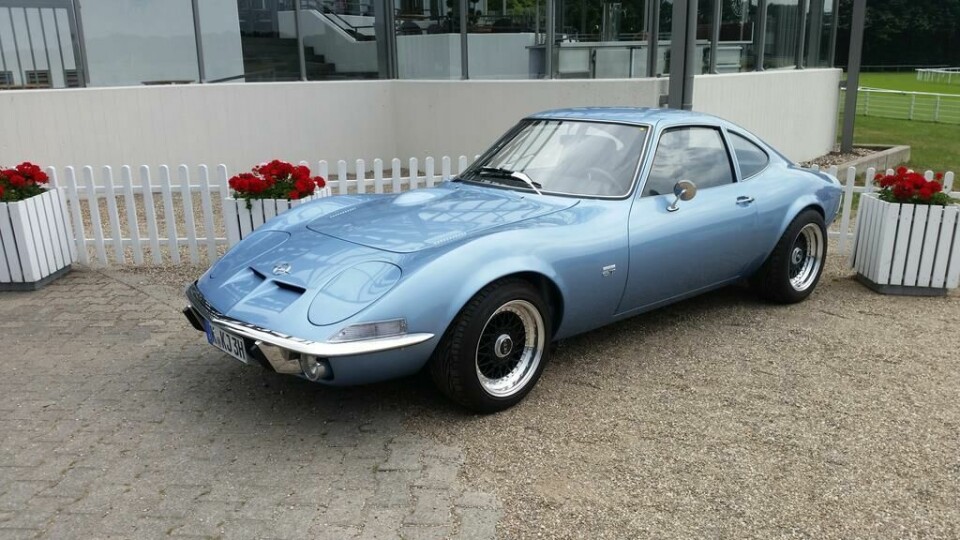
The curvature of the roof was made more pronounced, and bumpers and lights and venting were changed to conform to both European and American specifications.
The production GT debuted in 1968, the same year as the third generation Corvette.
The GT is often called the baby Corvette, and it is assumed that the Opel copied the styling of the American car. But both emerged from bubbling cauldron of amazing sports car ideas that came out of GM’s design studios in the early 1960s. There is much Corvair Monza and Pontiac Banshee in both of their designs.
Looking back, it can be said that both the Corvette and the GT were products of a remarkable design era, one that might be possible again in the transition to EVs, although it will take some courage to bring such new ideas to a dealership near you.
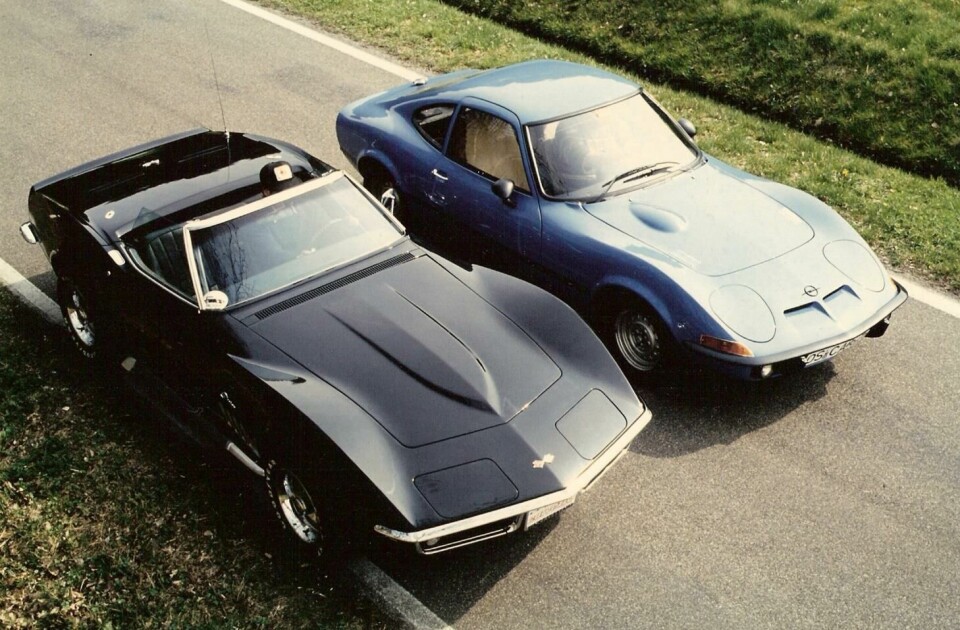
The fate of the principals this story is mostly a happy one.
The Corvair Monza GT and SS escaped the crusher and now reside at GM Heritage collection.
The two Pontiac Banshee prototypes also escaped the crusher and are in private collections. They are reportedly maintained in running order, remarkable after over half a century. They can be seen occasionally at various concours events.
The Opel Experimental GT can be seen at the Opel Museum in Rüsselsheim.
Clare MacKichan, who brought such opportunity to the Opel design studios in 1962, remained in Russelsheim until 1967, and returned to the Mothership at GM where he held various senior positions until his retirement in 1979. He was GM ‘lifer’ until the end. He died in 1996 and was posthumously elected to the Corvette Hall of Fame for his shepherding Chevrolet’s iconic sports car through its early years.
We need say little about the operatic life of John Z. Delorean, Engineer, Director of Pontiac, and Father of the GTO, and his own eponymous, gullwinged sports car. He was recently the subject of interesting biopic/documentary hybrid movie, “Framing John Delorean” which is available for streaming (and well worth a watch).
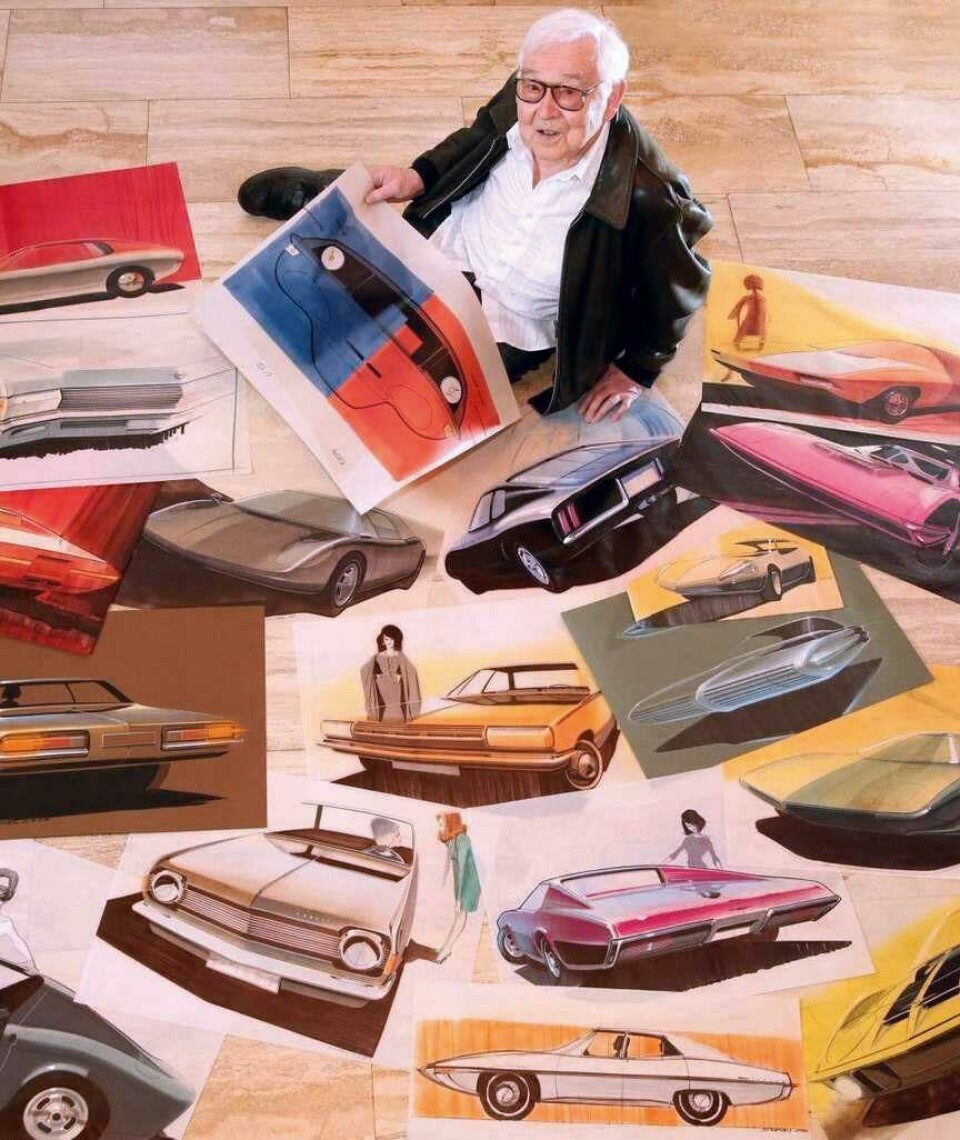
Finally, Erhard Schnell continued to lead the Opel Advanced studio through six design directors, among them MacKichan, Chuck Jordan and Wayne Cherry. He directed the design of the Opel GT2 concept (penned by the young Jean-Francois Venet). Production models such as the Opel Rekord C, the Opel Manta A, the Opel Ascona B, the Opel Kadett D and the Opel Corsa A were designed by or overseen by Schnell. He worked with Wayne Cherry to develop the Opel Calibra. “My favourite car”, Schnell would later say. “A new, modern design language. I had complete freedom with the styling.”
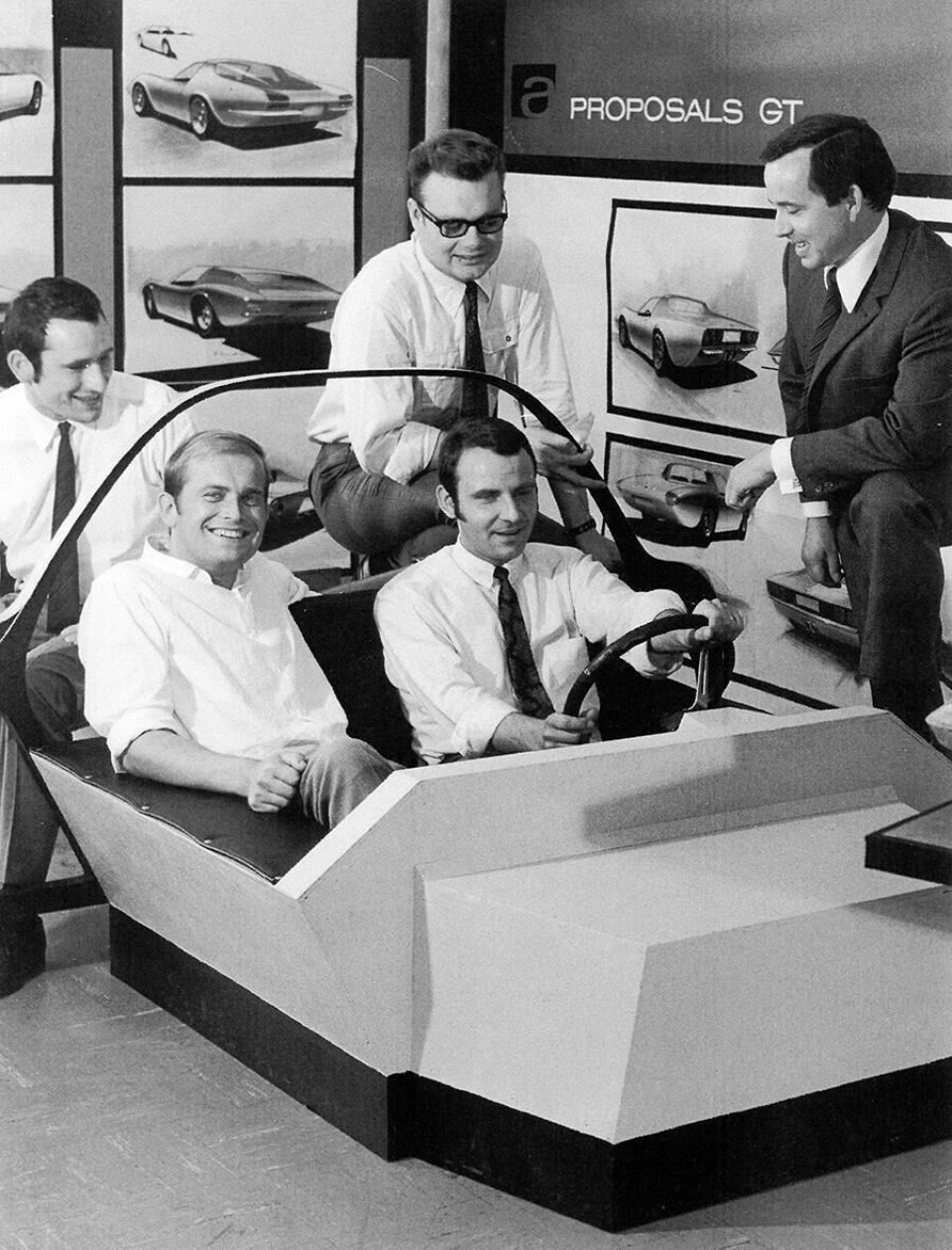
Schnell retired from Opel in 1992 after a remarkable 40-year career. He continued to design independently, and when asked if he would ever put his pen down, he replied, “Not at all. I simply transferred my work to my home and designed the garden or my house. I also often paint in watercolours. I will never be able to stay away from it completely.”
It was only last weekend that he finally put down his pen, at least in this life.
Erhard Schnell died on 8th February 2020, aged 92.
His life and his work remain an inspiration to us all.
